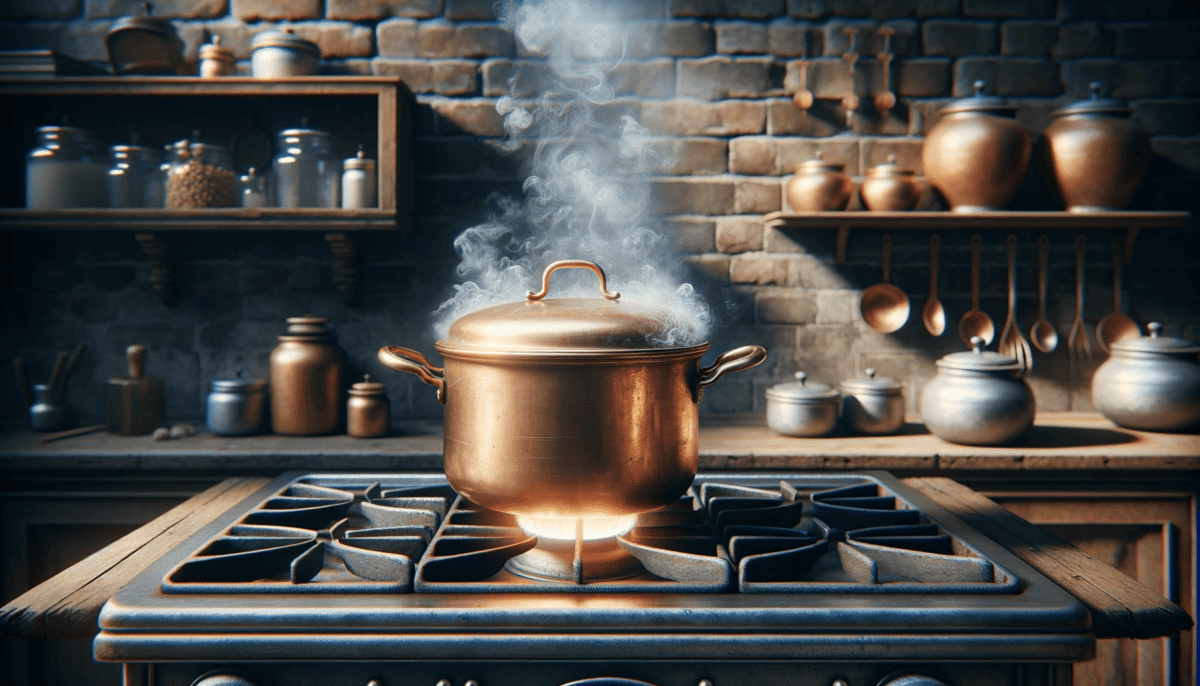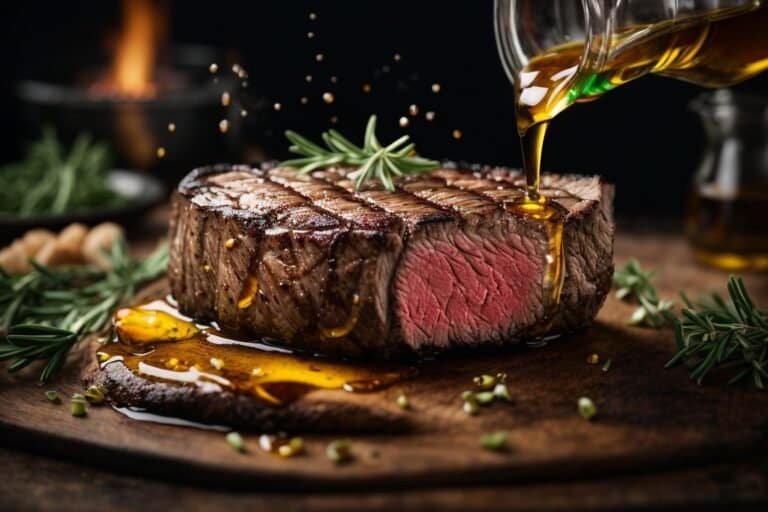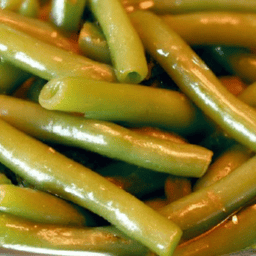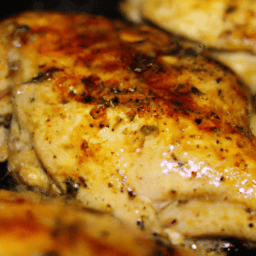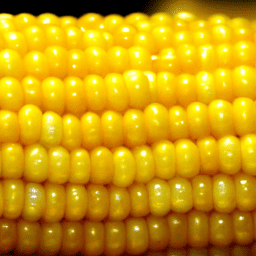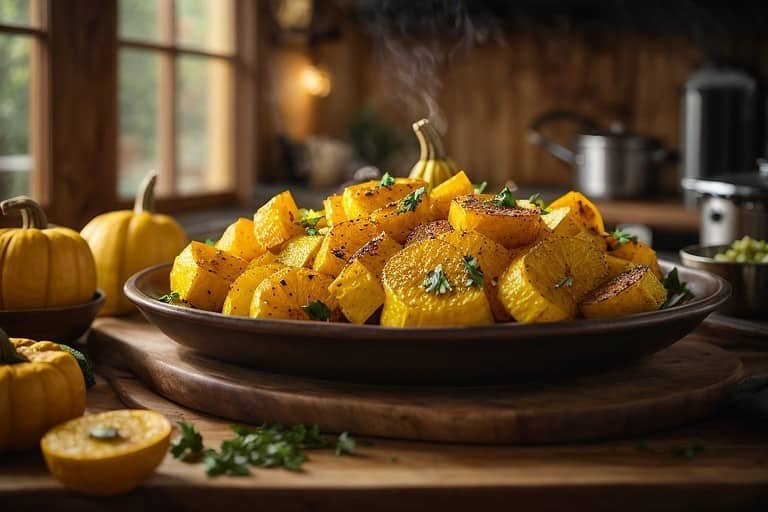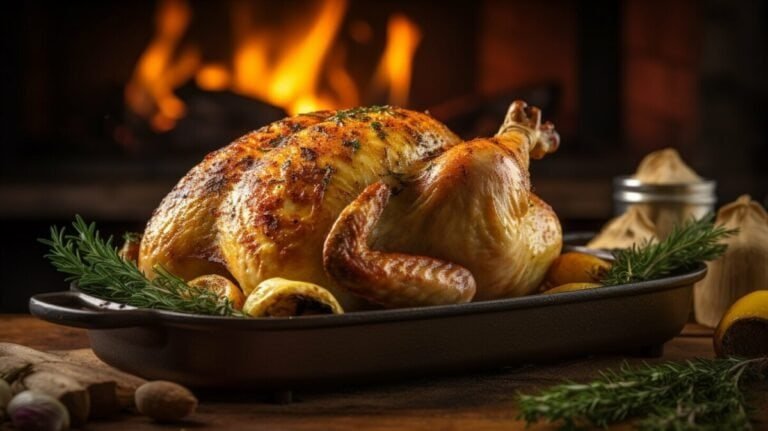Boiling Cooking Method
In the world of culinary arts, the boiling cooking method has been a trusted technique for centuries. This simple yet effective process involves heating a liquid until it reaches its boiling point, allowing food to be cooked by submerging it in the hot liquid.
With its ability to infuse flavors, preserve nutrients, and create tender and succulent dishes, boiling has found its place in kitchens worldwide. From soups and stews to pasta and seafood, this versatile technique has stood the test of time, making it a go-to choice for home cooks and professional chefs.
Whether you’re a novice in the kitchen or a seasoned pro, embracing the art of boiling will undoubtedly elevate your culinary creations to new levels of deliciousness.
Definition of Boiling Cooking Method
Boiling is a moist heat cooking method that involves immersing food in a liquid and heating it until it reaches its boiling point. This method is commonly used for various foods, including vegetables, grains, meats, and seafood. Boiling allows the food to cook quickly and evenly while infusing it with the flavors of the liquid it is cooked in. It is a versatile and easy cooking technique that is popular in kitchens around the world.
Basic understanding of the boiling process
When you boil food, the heat causes the liquid to reach its boiling point, typically 212 degrees Fahrenheit (100 degrees Celsius) at sea level. At this temperature, the liquid starts to evaporate rapidly, forming bubbles that rise to the surface. These bubbles burst, releasing steam into the air. As the steam escapes, it carries away some of the food’s moisture and flavor, resulting in a concentrated and rich taste.
Physical changes in food when boiled
During the boiling process, the heat causes several changes in the cooked food. First, the heat breaks down the food’s cell walls, making it softer and easier to digest. This is especially noticeable with vegetables, which become tender and lose their crispness when boiled. Boiling also causes proteins to denature and coagulate, resulting in the solidification of liquids like eggs. Additionally, boiling can cause some foods to lose their vibrant colors as pigments are released into the cooking liquid.
Difference between boiling and other moist heat techniques
While boiling involves submerging food in a liquid heated to its boiling point, other moist heat cooking techniques like simmering and poaching utilize lower temperatures. Simmering involves cooking food in liquid at a temperature just below boiling, typically around 185-205 degrees Fahrenheit (85-96 degrees Celsius). This gentle cooking method is ideal for delicate foods requiring more prolonged cooking. On the other hand, poaching involves cooking food in barely simmering liquid, which helps retain its shape and texture while infusing it with flavor.
Understanding the Science Behind Boiling
Role of temperature in boiling
Temperature plays a crucial role in the boiling process. When a liquid is heated to its boiling point, the added heat energy causes the liquid molecules to move more rapidly. As they gain energy, the liquid transitions to a gaseous state, forming bubbles. These bubbles rise to the surface and burst, releasing steam into the air. Maintaining a consistent temperature allows you to control the boiling process and ensure that your food is cooked evenly.
Impact of pressure on boiling point
Pressure also affects the boiling point of liquids. At higher altitudes, where the atmospheric pressure is lower, the boiling point of water is lower as well. This means that foods will cook at lower temperatures and for more extended periods of time in high-altitude areas. Conversely, in a pressure cooker, the increased pressure raises the boiling point of water, allowing food to cook more quickly. This is why pressure cookers are often used for time-sensitive dishes like beans or tough cuts of meat.
Effects of boiling on food’s nutritional value
While boiling is a simple and efficient cooking method, it can result in the loss of some nutrients from the food being cooked. Water-soluble vitamins like vitamin C and B vitamins can leach into the cooking liquid, especially when overcooked or when large amounts of water are used. To minimize nutrient loss, it is recommended to use minimal amounts of water and cook vegetables for a short period of time. Alternatively, using the cooking liquid in sauces or soups can help preserve some of the nutrients that may have been lost.
Types of Boiling Techniques
Boiling versus simmering and poaching
Boiling, simmering, and poaching are all water-based heat cooking methods that involve cooking food in a liquid. The main difference lies in the temperature at which each technique is performed. Boiling occurs when the liquid reaches its boiling point while simmering takes place at a lower temperature just below the boiling point. On the other hand, poaching involves cooking food in liquid that is barely simmering. Each technique offers varying tenderness and flavor infusion levels, allowing for diverse culinary outcomes.
Hard boiling versus soft boiling
When it comes to boiling eggs, two popular techniques are hard boiling and soft boiling. Hard boiling involves cooking eggs in boiling water for longer, resulting in a fully cooked yolk and firm egg white. Soft boiling, on the other hand, cooks the eggs for a shorter duration, leaving the yolk partially runny and the whites tender. These two methods offer different textures and are used in various dishes, such as salads, breakfast plates, or as standalone snacks.
Blanching and parboiling
Blanching and parboiling are techniques that involve briefly boiling food before finishing its cooking process using another method. Blanching is commonly used for vegetables and involves immersing them in boiling water for a short period of time, usually followed by an immediate plunge into ice water. This technique helps preserve vegetables’ vibrant color while slightly softening them. On the other hand, Parboiling partially cooks food, such as rice or potatoes, by boiling it first and then finishing the cooking process using methods like baking or sautéing.
Benefits of Boiling Cooking Method
Effects on food safety
One of the major advantages of boiling is its ability to kill harmful bacteria and microorganisms in food effectively. The high temperatures reached during the boiling process ensure that food is safely cooked, minimizing the risk of foodborne illnesses. This is particularly important when cooking meats, seafood, and other potentially high-risk foods. By boiling these ingredients, you can enjoy your meals with peace of mind, knowing that they have been properly cooked and are safe to eat.
Boiling for health and nutrition
Boiling is often considered a healthier cooking method, as it requires minimal added fat. By boiling food in water or a flavorful broth, you can create delicious and nutritious dishes without the need for excess oils or butter. Additionally, boiling can help retain water-soluble vitamins in certain foods as long as minimal cooking time and water are used. This makes it a great option for those looking to incorporate more nutrient-rich ingredients into their diet.
Convenience and efficiency of boiling
Boiling is a convenient and efficient cooking method that requires minimal preparation and supervision. Once you bring a pot of water to a boil, you can simply add your ingredients and let them cook until done. This makes boiling a great option for busy individuals or those who are new to cooking. Additionally, boiling can be done on a stovetop, making it accessible to people who may not have access to more advanced cooking equipment.
Disadvantages of the Boiling Cooking Method
Loss of nutrients during boiling
One of the main disadvantages of boiling is the potential loss of water-soluble nutrients from the food being cooked. Vitamins and minerals can leach into the cooking liquid, especially when excessive water is used or ingredients are overcooked. To mitigate this nutrient loss, it is important to use minimal amounts of water and cook vegetables for a shorter period of time. Alternatively, using the cooking liquid in sauces or soups can help preserve some of the nutrients that may have been lost.
Potential for overcooking
Boiling can sometimes result in overcooking, especially if ingredients are left in the boiling liquid for too long. This can lead to mushy textures and a loss of flavor and nutritional value. It is essential to closely monitor the cooking process and remove the ingredients from the boiling liquid as soon as they reach the desired level of doneness. Proper timing and attention are key to ensuring that your boiled dishes turn out perfectly cooked and retain their desired texture.
Constraints on texture and flavor
While boiling is a reliable and easy cooking method, it may not be suitable for all types of food. Some ingredients, such as delicate herbs or fruits, may lose their vibrant colors and become mushy when boiled. Additionally, boiling can cause flavors to become diluted, especially when excessive water is used or long cooking times are employed. It is important to consider these factors when deciding which cooking method is best for a particular ingredient or dish.
Common Boiled Foods and Dishes
Boiled vegetables and grains
Boiling is a popular method for cooking vegetables and grains. Vegetables like broccoli, carrots, and potatoes can all be boiled until tender and then used in a variety of dishes ranging from soups to salads. Grains such as rice, pasta, and quinoa can also be cooked by boiling them in water or broth. These versatile ingredients can easily absorb the flavors of the cooking liquid, resulting in delicious and nutritious meals.
Boiled meats and seafood
Boiling is commonly used to cook meats and seafood, especially in dishes like stews and soups. Tough cuts of meat, such as beef chuck or lamb shanks, can be boiled for extended periods of time to tenderize them and extract their flavors. Seafood, such as lobsters or crabs, can also be boiled to perfection, resulting in succulent and flavorful dishes. Boiling is a reliable cooking method for these protein-rich foods, as it ensures even cooking and minimal preparation.
Soups and stews
Boiling is an essential technique in the preparation of soups and stews. By simmering ingredients in liquid over an extended period of time, flavors meld together, resulting in rich and hearty dishes. Whether it’s a classic chicken noodle soup or a flavorful beef stew, the boiling method allows ingredients to soften and release their flavors, creating a comforting and satisfying meal. Soups and stews prepared using the boiling method can be customized with a variety of ingredients, making them a versatile option for any occasion.
Proper Usage of Boiling Equipment
Choosing the right pots and pans
When it comes to boiling, choosing the right pots and pans is crucial for optimal results. A pot with a thick, heavy base and a tight-fitting lid is recommended, as it allows for even heat distribution and efficient boiling. Stainless steel, cast iron, or enamel-coated pots are popular choices due to their durability and ability to withstand high temperatures. For delicate ingredients, using a steamer or a perforated insert inside the pot can help prevent direct contact with the boiling liquid.
Managing heat sources for boiling
Managing the heat source is essential when it comes to boiling. For stovetop boiling, using a burner of appropriate size is important to ensure that the heat is evenly distributed across the pot. Adjusting the heat to maintain a steady boil or simmer is essential to prevent ingredients from overcooking or boiling over. When using other cooking equipment, such as electric kettles or pressure cookers, it is important to read and follow the manufacturer’s instructions to ensure safe and effective boiling.
Safety precautions with boiling equipment
Boiling involves the use of high temperatures and hot liquids, so it is important to take proper safety precautions. Always use oven mitts or pot holders when handling hot pots or pans to protect your hands from burns. When removing the lid from a boiling pot, be cautious of the steam that may escape, as it can cause burns. Additionally, make sure to place the pot on a stable surface to prevent accidental tipping. By being mindful of these safety measures, you can safely enjoy the benefits of the boiling cooking method.
Mastering the Timing and Temperature in Boiling
Determining the correct boiling point
To determine the correct boiling point of water, you can use a kitchen thermometer or simply observe the visual cues. Water typically reaches its boiling point at 212 degrees Fahrenheit (100 degrees Celsius) at sea level. However, the boiling point can vary depending on factors such as altitude and atmospheric pressure. It is important to adjust cooking times and temperature settings accordingly, especially when preparing dishes in high-altitude areas or using pressure cooking equipment.
Understanding cooking times for different foods
Different foods require varying cooking times when boiled. For example, root vegetables like potatoes or carrots may take longer to cook compared to leafy greens like spinach or kale. Similarly, meats and seafood may require longer cooking times to cook and develop their flavors fully. It is important to refer to recipes and cooking charts for guidance on the appropriate cooking times for different types of ingredients. By mastering the timing, you can ensure that your boiled dishes are cooked to perfection.
Adjusting heat and monitoring the cooking process
Adjusting the heat and closely monitoring the cooking progress is crucial throughout the boiling process. After bringing the liquid to a boil, reduce the heat to a steady simmer or rolling boil, depending on the desired intensity of the cooking process. This ensures that the food is cooked evenly and thoroughly. By keeping a close eye on the pot, you can prevent ingredients from overcooking or boiling over. Testing the doneness of food by inserting a fork or knife can help determine when it is fully cooked and ready to be removed from the boiling liquid.
Tips and Tricks for Effective Boiling
Preventing food from sticking or burning
It is important to stir the ingredients occasionally to prevent food from sticking to the bottom of the pot or burning during boiling. Stirring helps distribute heat evenly and prevents ingredients from clumping together. Additionally, using a non-stick pot or adding a small amount of oil to the boiling liquid can help create a protective barrier between the food and the pot. By employing these techniques, you can ensure that your ingredients are cooked uniformly and avoid any unpleasant burnt flavors.
Enhancing flavor during boiling
Boiling provides an excellent opportunity to infuse flavors into your dishes. Adding herbs, spices, or aromatics like garlic and onions to the boiling liquid can enhance the taste of the food being cooked. The flavors will permeate throughout the dish, resulting in a more complex and savory final product. Experiment with different combinations of seasonings and ingredients to create unique and flavorful dishes using the boiling method.
Avoiding common boiling mistakes
Boiling mistakes can happen, but there are ways to avoid them. One common mistake is overcooking ingredients, which can result in a loss of texture and flavor. To prevent this, closely monitor the cooking process and regularly test the doneness of the food. Another mistake to avoid is using excessive amounts of water, which can dilute flavors and lead to nutrient loss. Use just enough water to cover the ingredients for optimal results. You can achieve delicious and perfectly cooked boiled dishes by being mindful of these common mistakes.
Exploring Culinary Applications of Boiling
Boiling in international cuisines
Boiling is a technique used in various international cuisines, each with its own unique flavor profiles and ingredient combinations. In Chinese cuisine, hot pot or “shabu-shabu” involves boiling a variety of ingredients, ranging from meats and seafood to vegetables and tofu, in a communal pot of flavored broth. In Italian cuisine, pasta is traditionally boiled until al dente before being tossed with various sauces. These are just a few examples of how boiling is utilized in different cultural and culinary contexts.
Experimental and gourmet uses of boiling
Boiling can also be used to create experimental and gourmet dishes. For example, sous vide cooking, which involves vacuum-sealing food and boiling it at a precise and controlled temperature, has gained popularity among professional chefs for its ability to achieve perfectly cooked and tender meats. In molecular gastronomy, boiling can be used to create unique textures and flavors, such as “spherification,” where liquid ingredients are turned into spheres by immersing them in a boiling water bath. These innovative uses of boiling showcase the culinary possibilities and creativity that can be achieved with this cooking method.
Future trends in boiling techniques
As culinary techniques continue to evolve, so does the art of boiling. Chefs and home cooks are constantly experimenting with new ingredients and flavor combinations to push the boundaries of traditional boiling methods. We may see advancements in precision temperature control and food safety protocols, allowing for even more precise and effective boiling techniques. Additionally, the incorporation of technology, such as smart cooking devices and sous vide equipment, may further enhance the convenience and efficiency of boiling as a cooking method.
In conclusion, boiling is a versatile and convenient cooking method offering many culinary possibilities. Whether you are boiling vegetables, meats, or grains, understanding the basic science behind boiling and following proper techniques can help you achieve delicious and satisfying results.
By mastering the timing, temperature, and flavor-enhancing techniques, you can create a variety of boiled dishes that are nutritious, flavorful, and sure to impress. So grab a pot, add your ingredients, and watch the magic of boiling transform everyday ingredients into culinary delights. Happy boiling!

